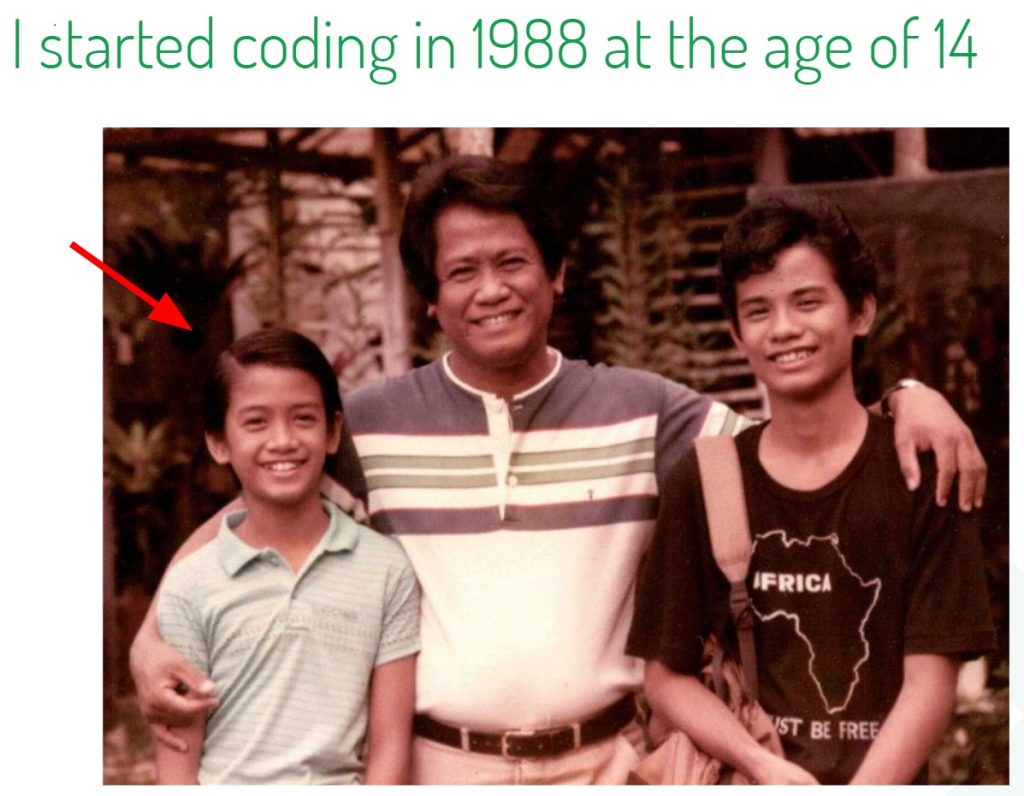
In the summer of 1988, at the age of 14, I learned to code in Summer Camp. Computer programming was a new world and I quickly went in and got hooked. After the camp, we bought our first computer — screen was all green, no mouse, no hard disk, no internet. We went to the homes of friends to write and try new programs from a book and to solve some interesting math problems like finding the highest prime number. Watching how a computer can process so much information in so little time was like magic, and we were magicians who commanded this new machine.
When the internet came seven years later in 1995, we saw that anyone can easily share anything. As a Masters student in Computer Science, me and my peers envisioned a future where the higher education system would celebrate the democratization of knowledge and everyone can learn from any professor, even those from Harvard or Yale. In 2006, video on the web became mainstream, further democratizing knowledge in a richer format.
In my 32 years of being a computer programmer, educator and entrepreneur, technological progress was a given. But in the last few years, I saw that the pace of this progress is accelerating. I said to myself, “Higher education is not evolving and innovating at the pace of technological progress.” It is still desperately trying to hold on to its old ways, emphasizing degrees, grades and courses. As the former CTO of a tech company, I hired Vietnamese programmers using methods that looked beyond their grades and degrees. Now that I came back to being an educator, I knew that I have to start teaching computer programming to children. Children are naturally curious and are willing to explore making things without thinking of grades, much less their “career”.
Looking back on the early years, I did many different programming projects out of curiosity. I can remember the lessons from those early projects — games, graphics, math — much more than the projects I was required to do in university. Now, I can give this a name, the “maker mindset”. I was a maker! I believe that children can be set free and encouraged to make things. This past year, I learned about an amazing small computer called the BBC micro:bit, that can allow kids to put programmable electronics like motors, lights, sensors and sounds in the things they make.
As makers, kids can learn technology and cultivate their curiosity using simple tools like the micro:bit. The micro:bit is one thing on my list of “Things I Wish I Had When I Was A Kid”. Electronic components that can be attached to the micro:bit are very cheap, thanks to China. Making a robot, an automated farm or a smart city model has never been easier. Just a few years ago, many electronic components were only accessible to university students.
So why is it important to teach kids how to make technology ? The job of the parent and the teacher is to prepare kids for the future. But what if we don’t know what the future will be like ? As someone in tech for more than 30 years, I don’t even know what will be mainstream technology in two years! Ever since the internet reached our small university town in the Philippines, I’ve followed the rise and fall of technologies and tech companies. In the tech companies I founded, I have also seen how technologies (software and hardware) have evolved in just a few short months and disrupted the business model. Every entrepreneur needs to have the skill to adapt to changing technologies. In one’s spare time, it’s good to imagine the future by reading and listening to credible futurists like Michio Kaku and Peter Diamandis. Only this way can we imagine what the future will be like for our kids when they become productive citizens of society.
Kids, parents and teachers now can also learn about the 2030 Sustainable Development Goals and create maker projects that relates to one or more of these goals. I have learned that the BBC micro:bit is a great tool for making prototypes for learning and addressing the SDGs. I have a 16-year-old son and I wonder what the world will be like for him and his generation. By 2030, he will be 26. Time flies so fast. With what I learned about tech and its history, I owe it to this generation to teach them the tech tools and the maker mindset in the hope that they will use it to address the world’s problems.
